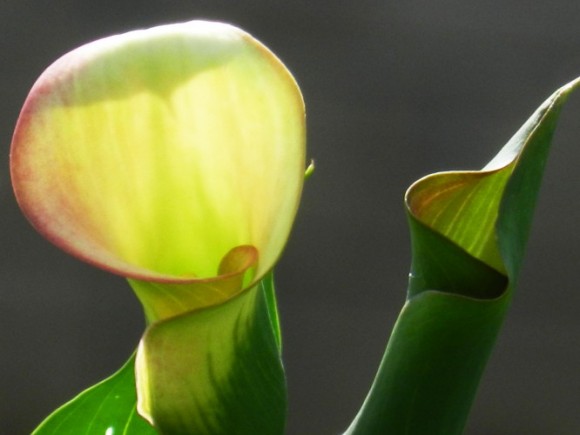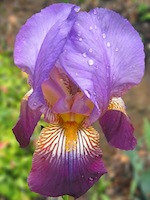Search Results for “”
A Gift of Irises Sends a Regal Message
Irises are a popular cut flower, often found in mixed arrangements with roses or lilies. They are also quite striking on their own. Dating back several thousand years, the iris flower has long been associated with both royalty and heaven. Continue reading [...]
5 Great Flowers for November
All flowers are beautiful and appropriate for giving anytime. But, certain flowers are standouts for November. They offer a look that's perfect for fall and a sense of warmth to convey just the right message during the holiday season. Continue reading [...]
The Right Flowers for a Cutting Garden
One of the things that brings us great joy is growing flowers to cut and place inside of our home. We love the way fresh flowers offer joy, beauty, and gratitude to our day. We appreciate having the ability to cut flowers when we want, plop them in a vase or bowl, and instantly receive the good feelings that they provide.
If you adore the idea of having fresh flowers available for your home, whenever you want them, consider planting a cutting garden. There are several blooms you can choose from to give you an endless supply of flowers for stunning bouquets, and even single-vase displays, in your living space. Continue reading [...]
Fragrant Flowers to Give as Gifts
Want to give flowers that will fill your recipient’s home with a strong and beautiful fragrance? We thought you might. Some flowers are more fragrant than others, so if you want to offer an experience for your giftee that’s like being surrounded by fresh blossoms in an abundant garden, you should know which flowers to choose.
Sweet smelling flowers conjure up thoughts of romance, peace, and innocence. They’re perfect for giving when you want to say, “I love you,” “You’re special,” or “I think I’m falling in love with you.” Continue reading [...]
Celebrate Mental Health Day with Flowers that Make you Feel Fabulous
There's a lot going on in this world that can drive a person crazy, so taking care of mental health should be an important priority in everyone's life. October 10th is recognized worldwide as Mental Health Day and is set aside to celebrate the advances made globally in mental heath education, support and awareness. With several recent studies published that link lowered levels of stress, depression and even pain and healing time to simply looking and smelling flowers and plants around you, picking up a bouquet on the way home might just help keep you sane in this mad, mad world. Not sure which flowers will have the most positive impact on your state of mind? Here are a few you'll just go crazy over. Continue reading [...]
The Right Flowers for an October Birthday
Finding the right flowers to send an October birthday bouquet can be tricky because the birth flower for October is the marigold. Marigolds are not typically found in bouquets and definitely not the easiest flower to track down if you want the convenience of calling a floral shop and sending a bouquet. A great alternative to marigolds are blue flowers since the birthstone for October is the sapphire. In fact, many October birthday flower recipients are more likely to know the symbolism of the color of their birthstone than to receive their actual birth flowers. Continue reading [...]
The Beautiful Iris Flower
The Iris flower has long been appreciated for its exotic and delicate bloom. So beautiful that it has graced several pieces of Vincent Van Gogh's artwork, the Iris is named after the Greek goddess for the Messenger of Love. The word "iris" means rainbow, and while it is best know for the lovely shades of blue and purple in which it comes, it is also available in white, peach, yellow, pink, red, brown, and many other colors of the rainbow. The varied colors of the iris mean different sentiments: yellow means passion, white means purity, blue means hope, and purple means wisdom. Continue reading [...]
Mother’s Day Flower Arrangements
As we’ve previously mentioned, flower arrangements for Mother’s Day are a great way to show Mom how much you appreciate her. We’ve recommended several Mother’s Day flower arrangements, and today we wanted suggest some of our favorite garden variety flowers. While roses, orchids and lilies are always a classic and beautiful option, garden-fresh mixed bouquets offer a stunning option that look lush and bountiful. Continue reading [...]
The Right Flowers for Allergy Sufferers
Flower allergies can keep even the most enthusiastic flower lover from enjoying their favorite blooms. Low-pollen flowers for those who have flower allergies can be a great option, depending on the severity of their allergies. Remember that, while sending low-pollen flowers to allergy sufferers is a great thought, you want to be absolutely sure that the allergy sufferer has only mild allergies, because those who suffer form severe allergies can become sick if exposed to even low-pollen flowers. Here are a few low-pollen flowers that will work well for mild allergy sufferers. Continue reading [...]
Perennial Spring Flowers
With spring upon us, many are excitedly awaiting the blooms of perennial spring flowers. Whether you are planning which arrangements you’d like to have at your spring wedding, or planning your own personal garden, there are plenty of beautiful perennial spring flowers from which to choose. Continue reading [...]
Iris, the Rainbow, for Faith, Hope and Wisdom
With so many colors of iris flowers, and a tradition stretching back to the Ancient Greeks, the iris carries deep sentiments and many flower meanings. To learn more about this most spectacular bloom, and to learn what message you send when you pick iris flowers to send, read on. Continue reading [...]






